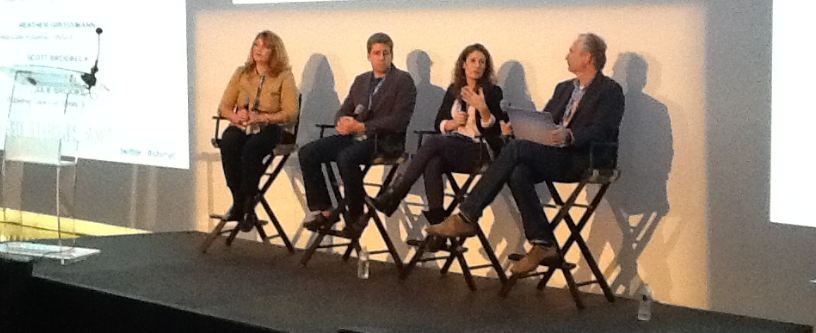
Hyperlocal sites DNAinfo, ARL Now and CapeCodToday.com all have one thing in common: they target local advertisers. But what local and national advertisers expect from local content publishers is changing, executives from the three sites said, and local publishers needs to adapt quickly.
Those were the takeaways from the second day of Street Fight Summit in New York City, a conference focused on hyperlocal marketing and publishing. The discussion of advertising models featured Heather Grossmann of DNAinfo, an online publisher focused on New York City and Chicago), Scott Brodbeck, publisher of ARLNow.com focused on the suburbs of Washington D.C. and Julie Brooks, publisher of CapeCodToday.com, a hyperlocal site that launched 16 years ago.
Top of mind for the panelists was the recent shakeup at AOL’s national network of local news sites called Patch, which scaled quickly to cover hundreds of local markets but has lately stumbled, with the parent company pulling back sharply on some investments.
DNinfo’s Grossmann said Patch grew too quickly, to more than 800 sites, with only one staffer per site and didn’t have the advertising presence with local businesses that she’d expect as a competitor. Brodbeck linked the quality of content and local editorial presence with the business model: Patch sites that had strong editors typically saw more user engagement and had better ad sales, he said, but “it was completely hit or miss across the network.”
Brooks said Patch sites near her had “pretty good” editorial content but that national branding wasn’t popular among small business owners and banner ads, the network’s original offering, were unpopular.
“You’re trying to convince them to buy some rectangles on a website, and they say, ‘I never click on those things, why would I buy one?’” she said. Advertisers want more value for their ad dollars, such as preferential treatment in calendars, enhanced listings, special deals to readers and the like.
Brooks explained that her site, for example, will re-write press releases from local businesses and label them as sponsored content and that local business owners like to see their photos with their ads so customers can put a name to a face when they shop.
Mobile demands attention, too. CapeCodToday.com reformatted its mobile site and today businesses that purchase larger ads on the desktop site also get an ad at the top of the mobile version. DNAinfo turned to responsive design and the result is “it looks so much better than our mobile site did.”
Brodbeck on the other hand said mobile may not be worth it for smaller publishers. “It’s just not a money maker, at least for a publisher of my size,” he said, adding that mobile sites often strip out comments and other features that local readers find engaging. For his sites, sponsored content has been a hit with advertisers: for example, local real estate agents and attorneys write columns that are marked as sponsored but draw reader engagement.



